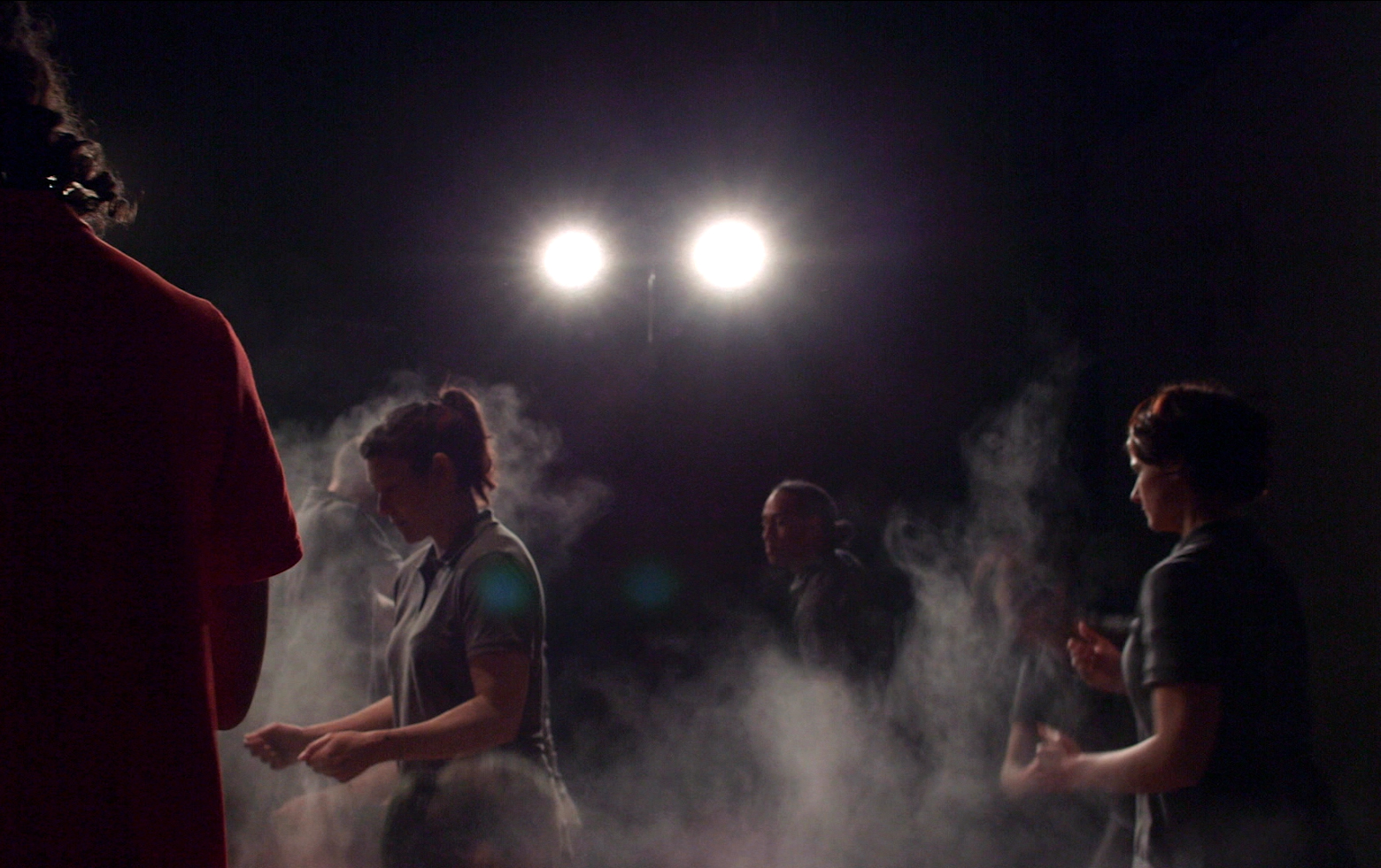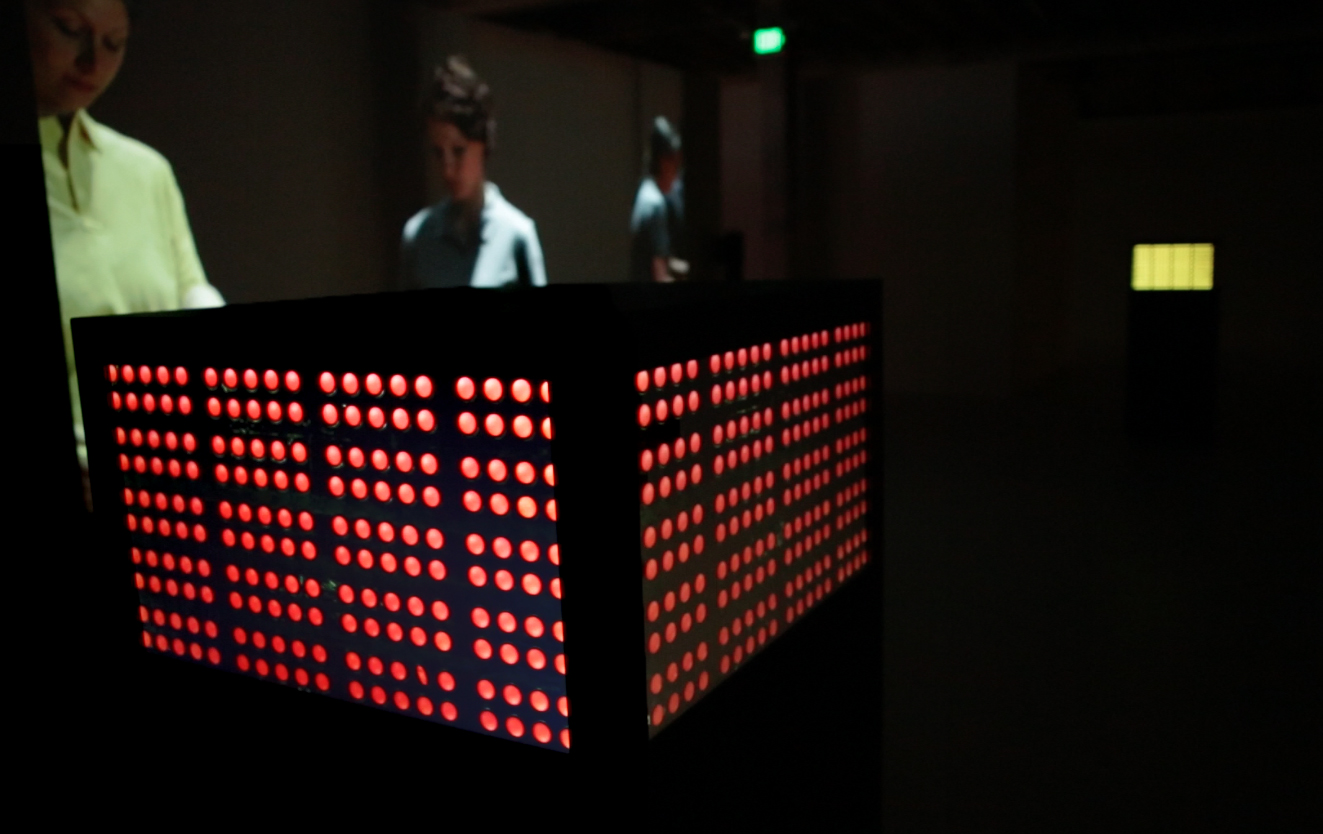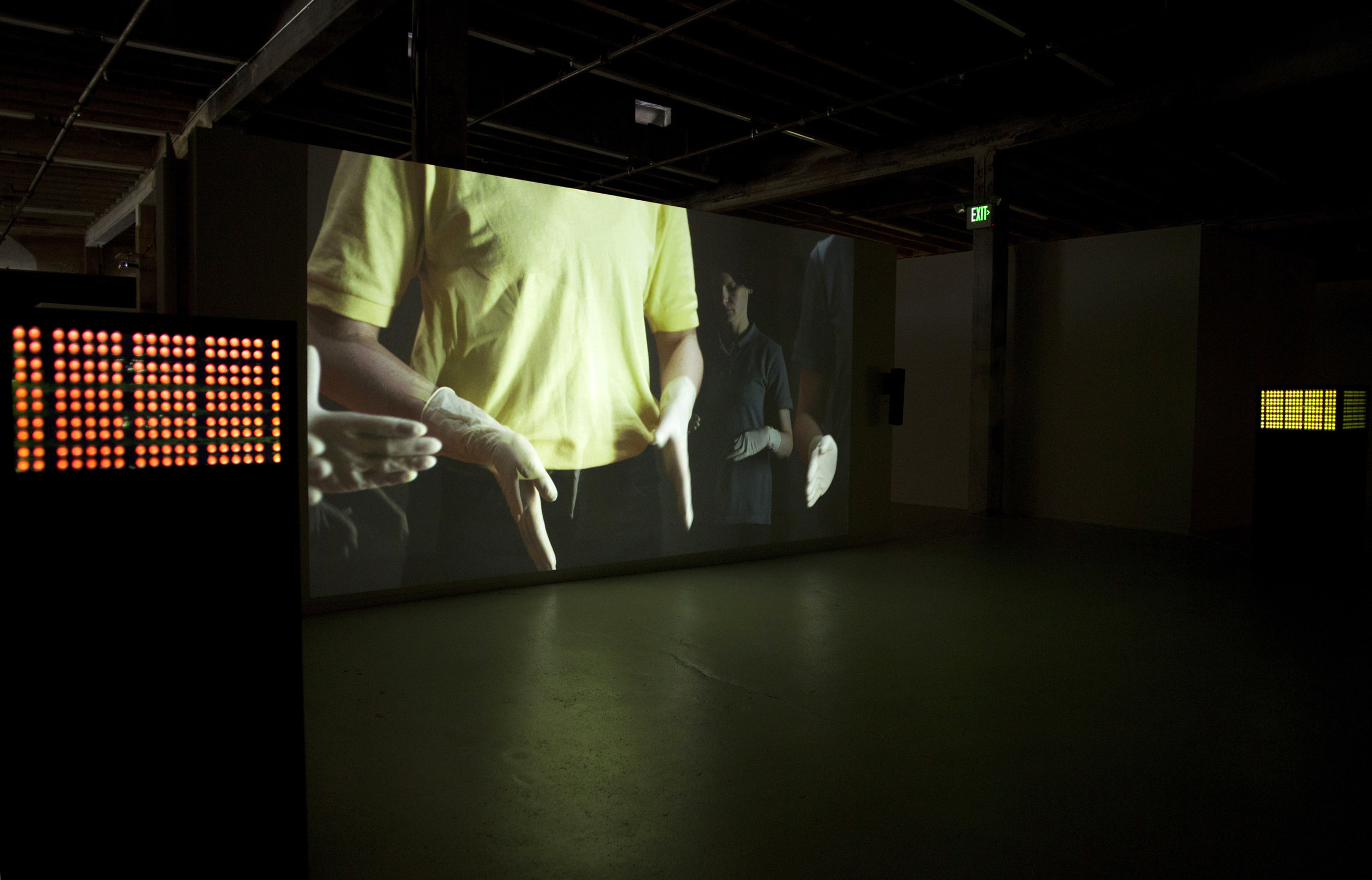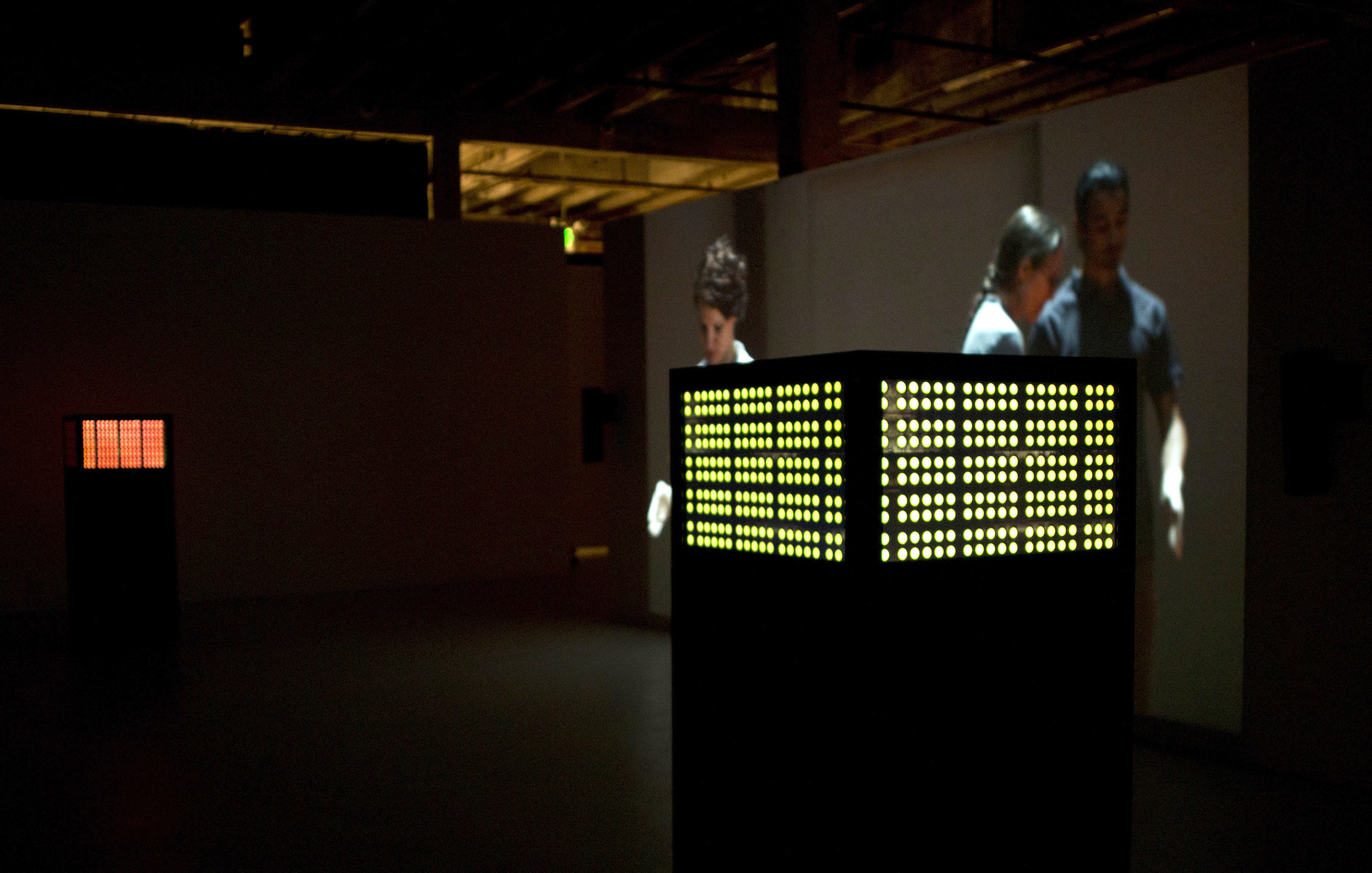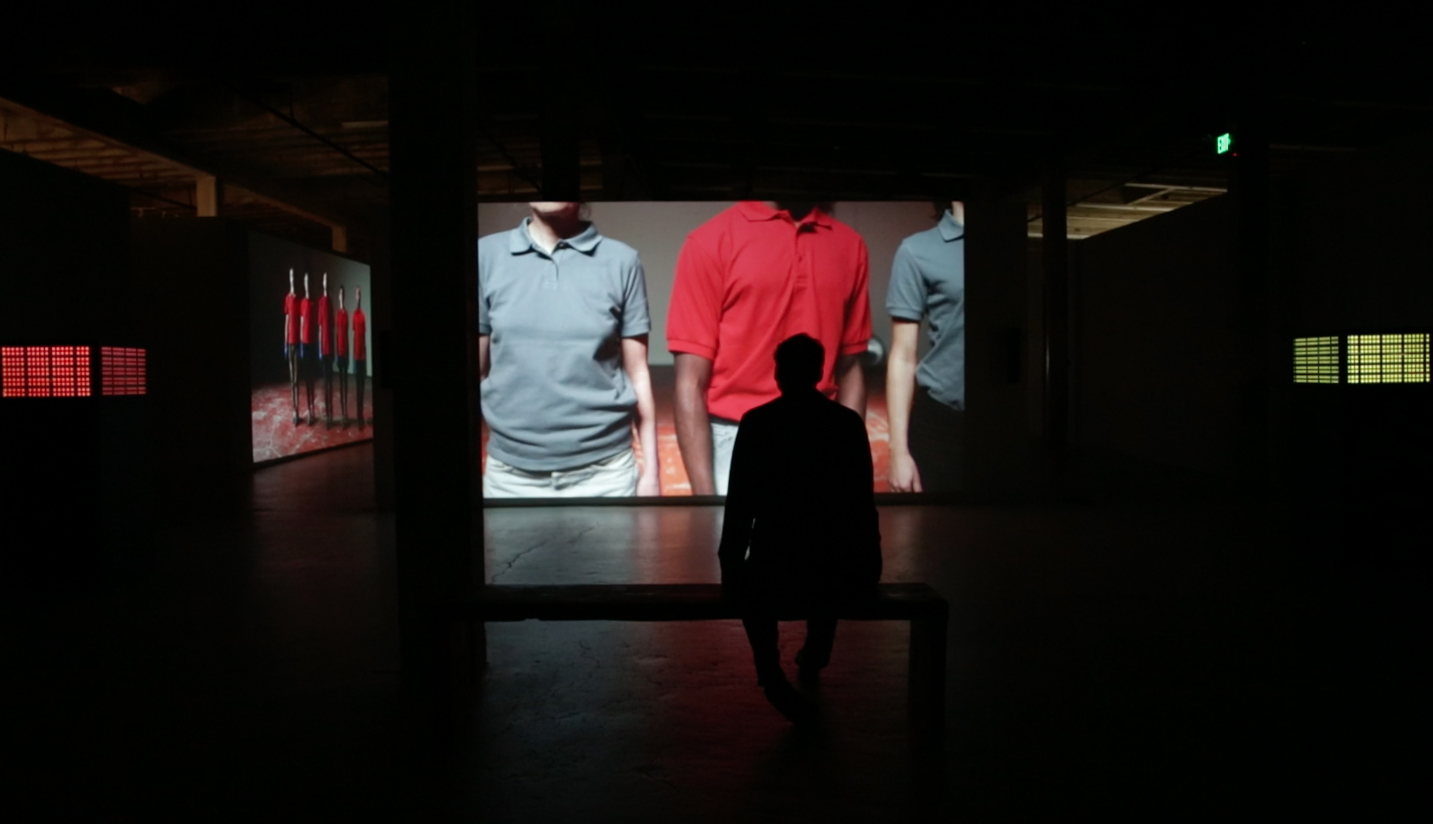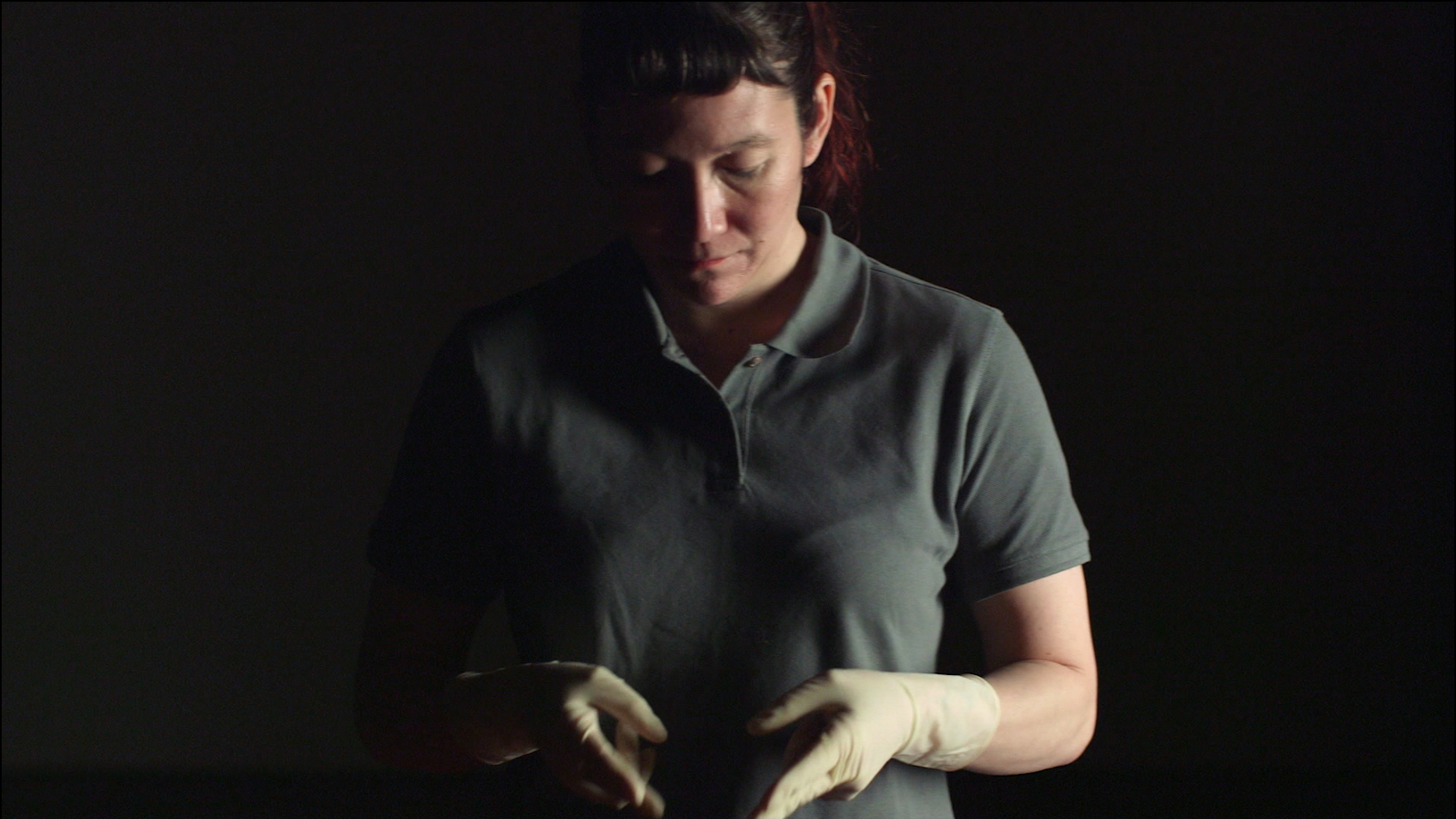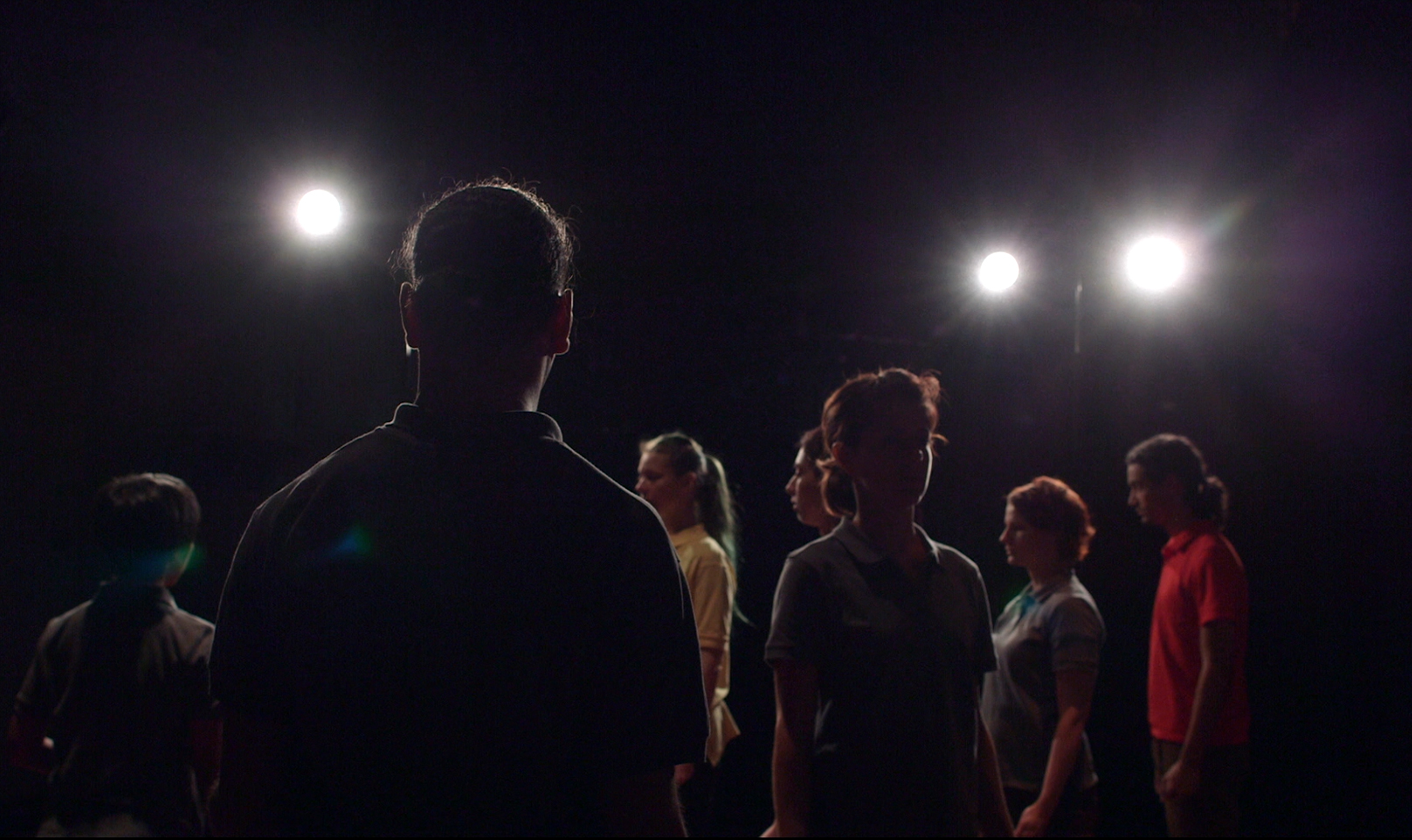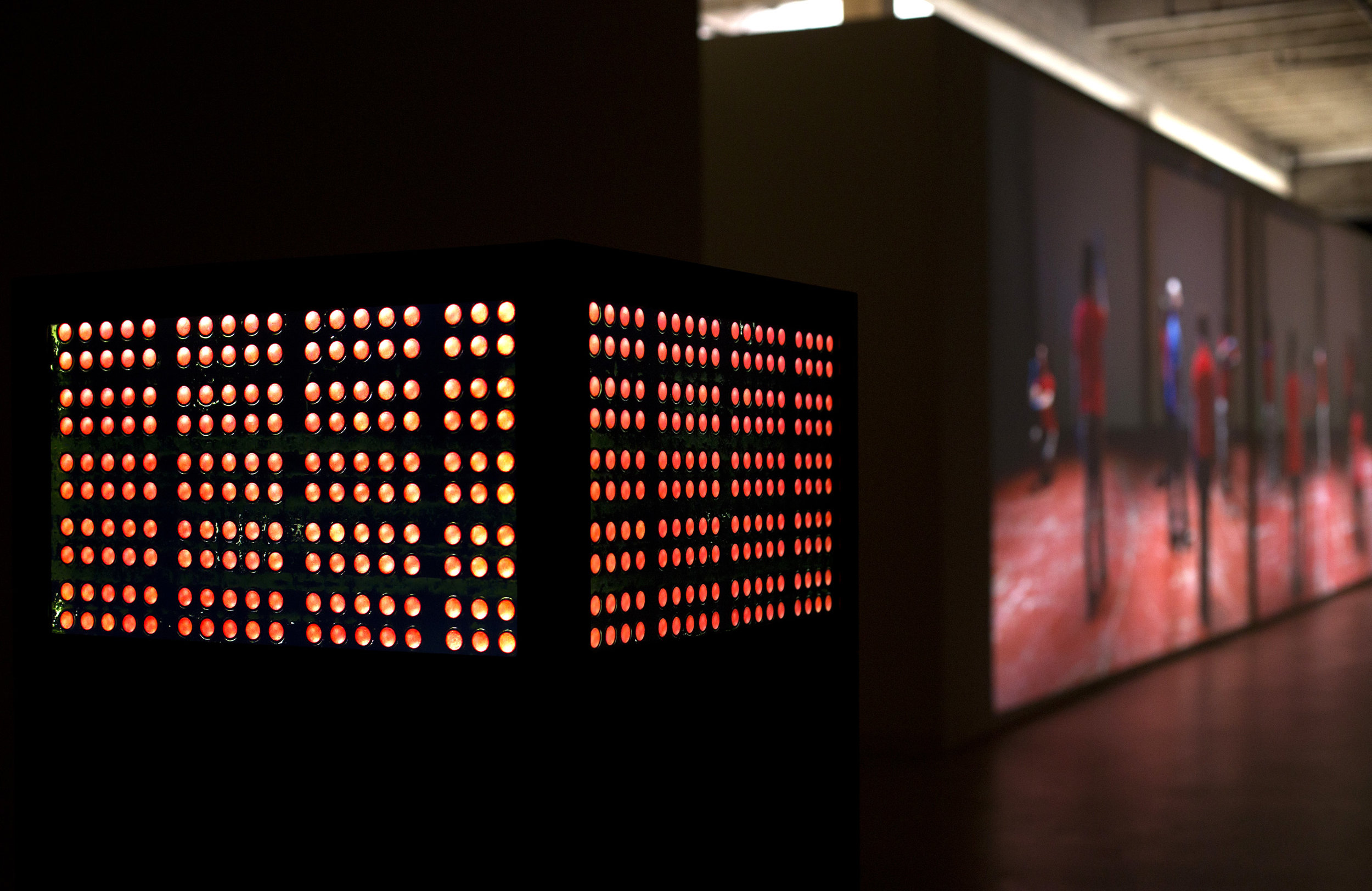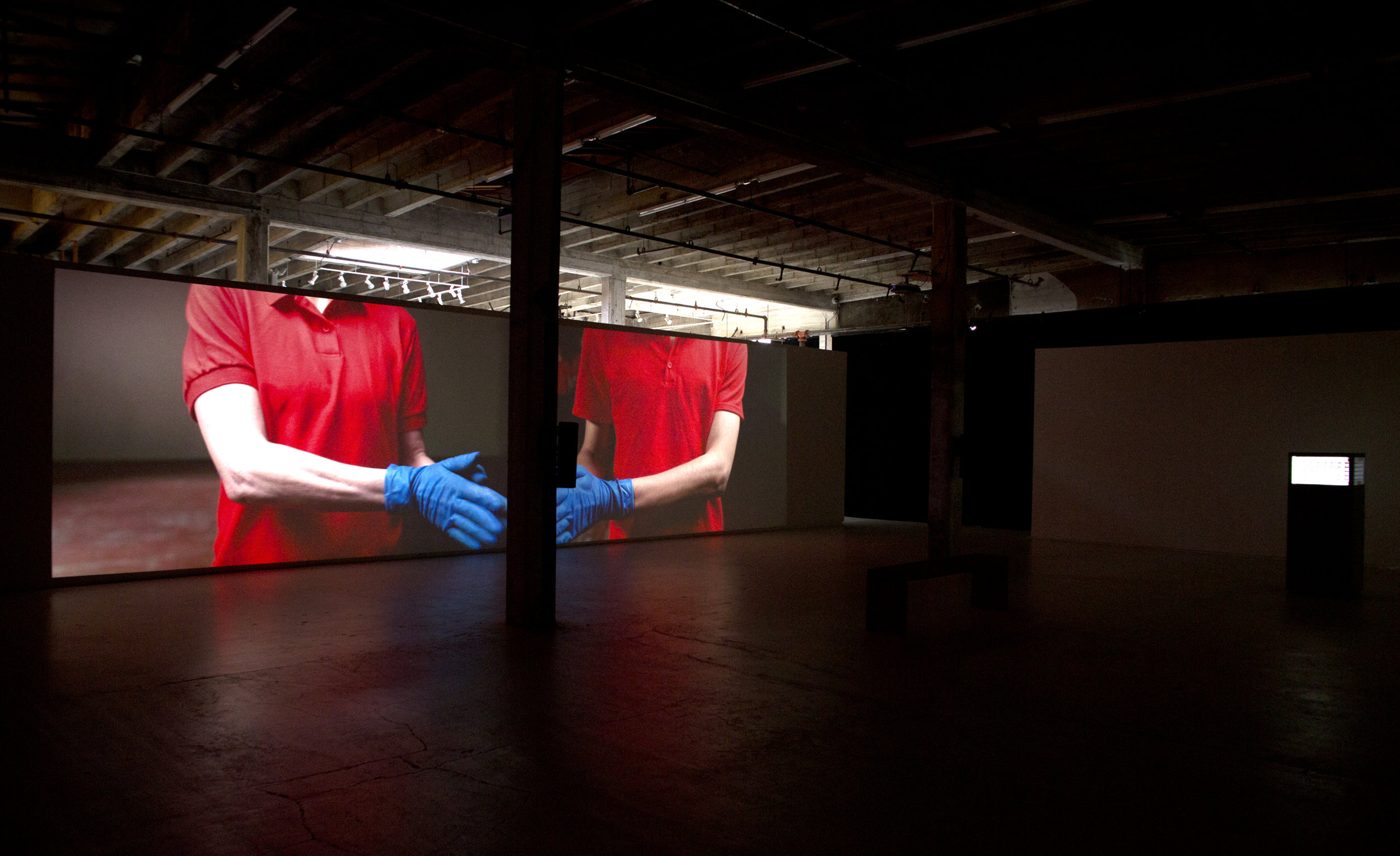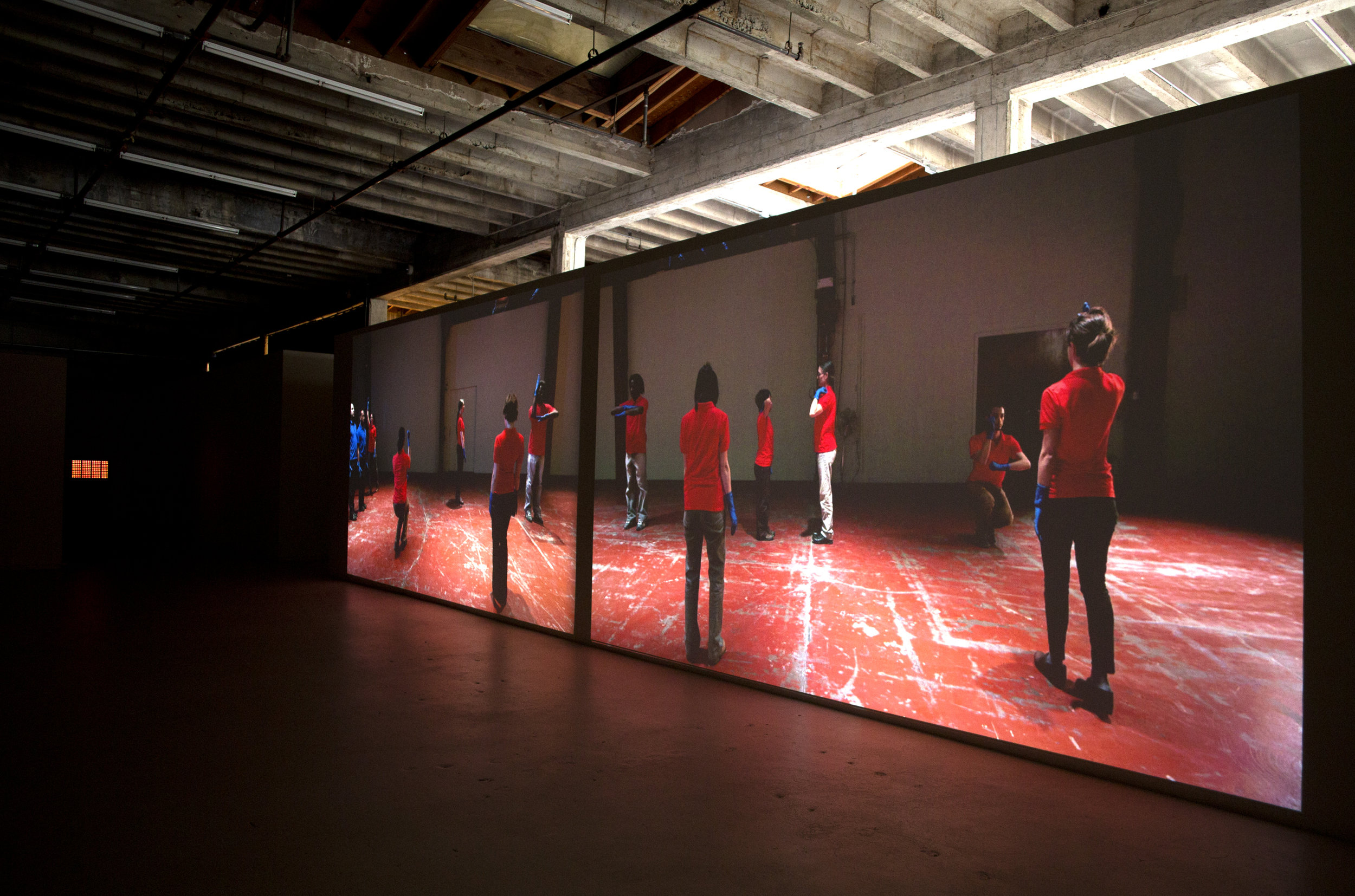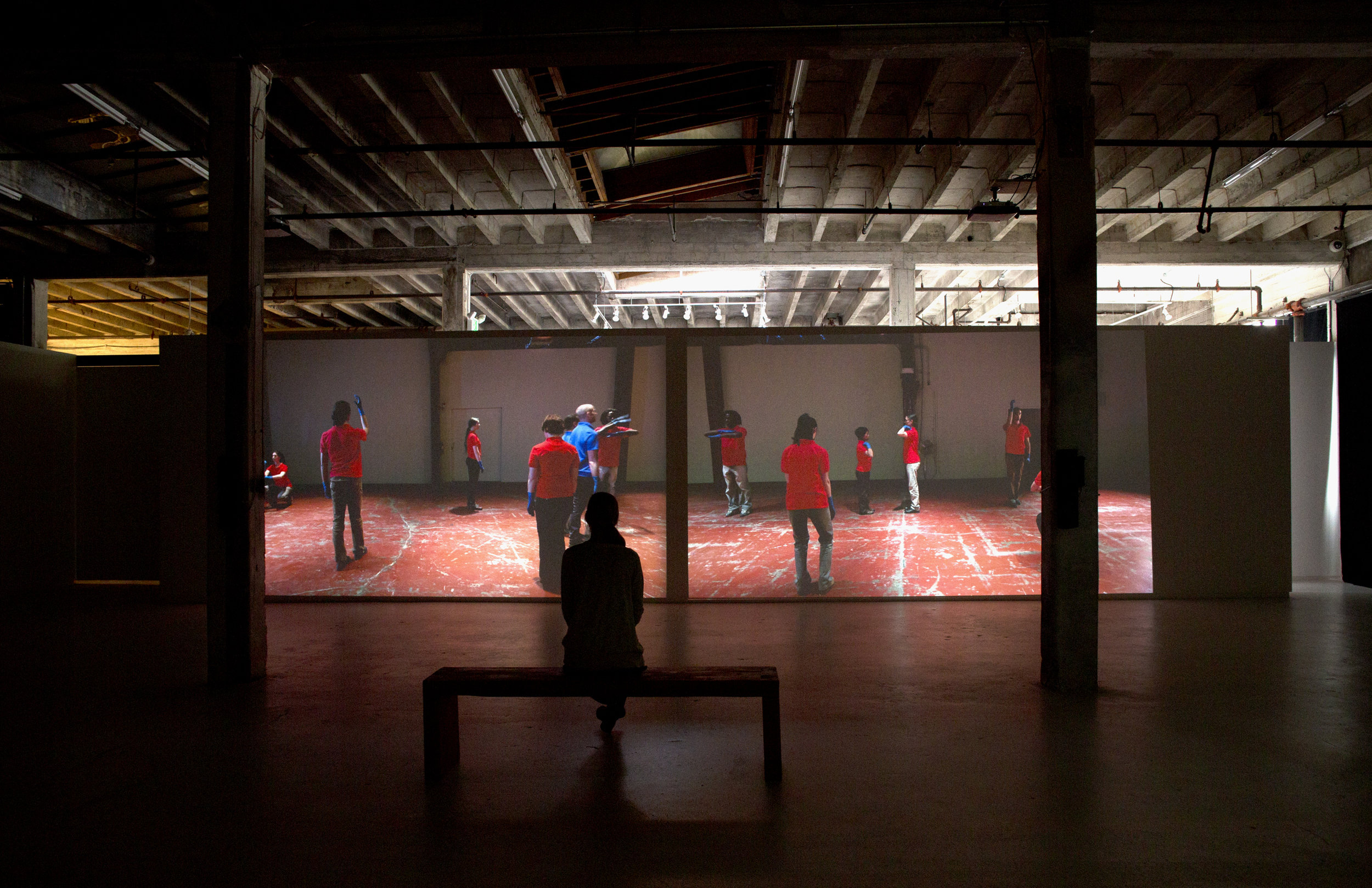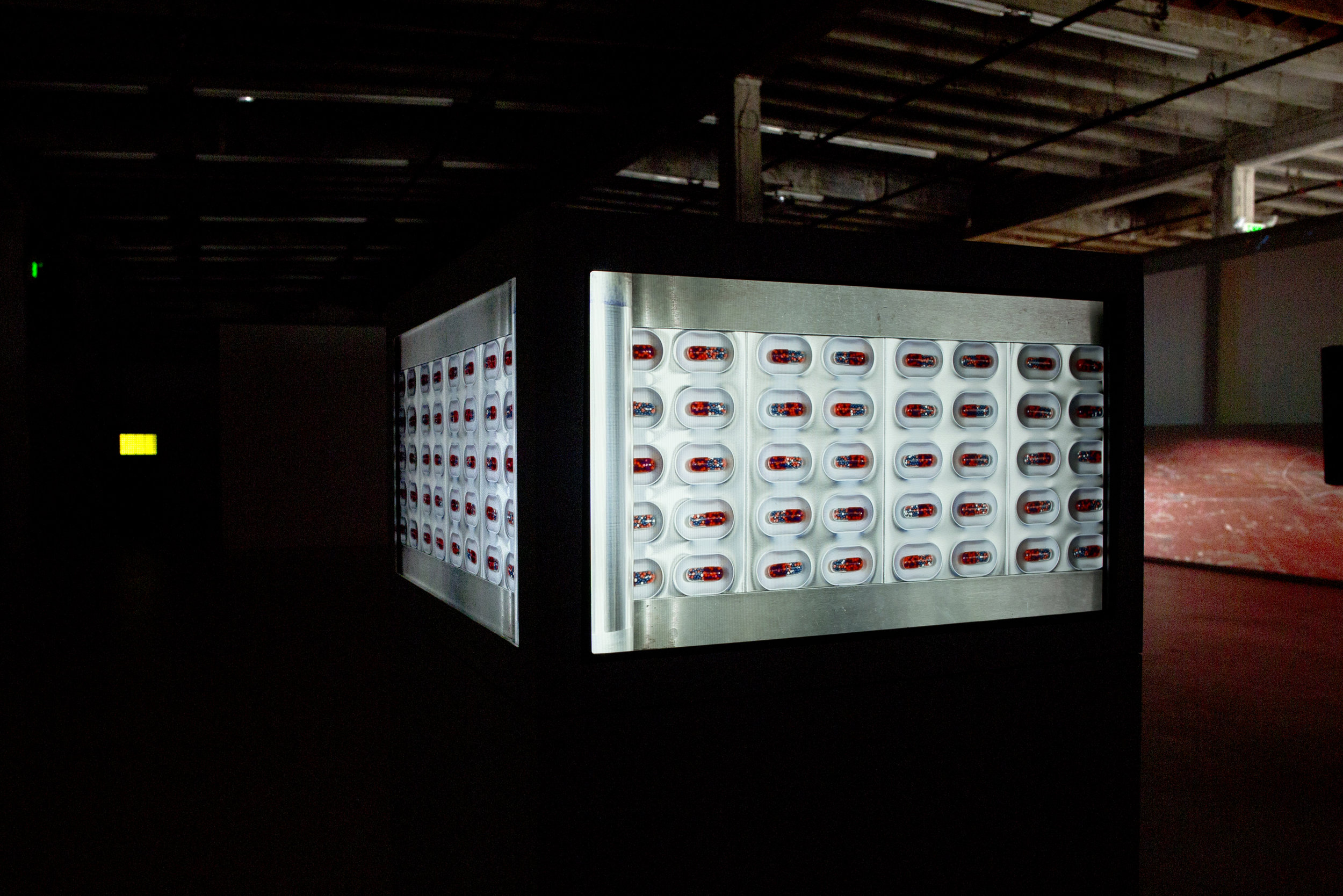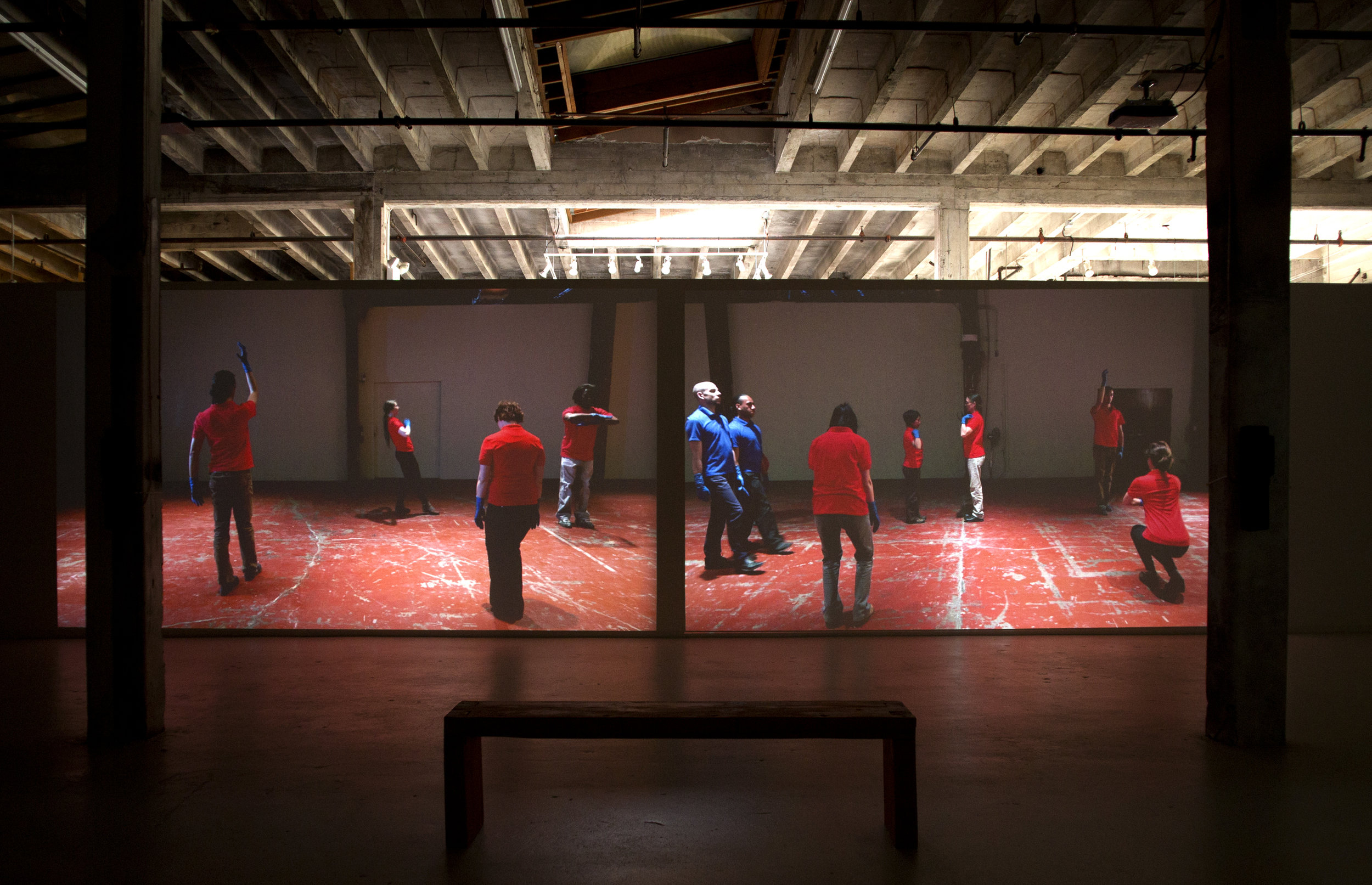Remedies, 2014
Video Installations
Remedies is a series of multi-channel video installations inspired by the pharmaceutical factory run by Saraf’s family in India. The three part series is based on different forms of medicines manufactured at the facility: tablets, capsules and syrups. Each installation includes a large central video projection and video box sculptures.
Exhibition by Himali Singh Soin
The Factory of Feeling
Here, industry is intimate, sound is sinuous, the body, robotic. San Francisco based Surabhi Saraf journeys back to where she grew up, surrounded by the sights and sounds of her father’s pharmaceutical factory in Indore, re-creating the story of the medicine and the machine in the form of a series of multi channel audio-visual installations. What we experience is sound so primal that it might be mistaken for emanating from within the viewer, a dance between the maker and the thing made, simultaneously stoic and sensuous.
As a child, I wandered the factory premises, mesmerized by the machines, by the dazzling transformation of powder pressed into pills. This factory, made up of my father’s familiar face and his employees, who soon came to be adopted guardians and friends, was not the factory of filth or forbidden activity. It felt like a big house with many small rooms. Skittering between those long dimly lit corridors into the bright churning rooms, I loved bothering the workers with my childish curiosities! In 2012, while visiting our factory as a grown-up, I was amazed at how many of them still worked there, having become like an extended family, and how many machines were still in order. Their aged noise juxtaposed organically with newer more precise and quiet equipment. I wanted to capture all these elements—my memories, the machines, the men and women—and, having a history of making art with sound, that was where I began.
Though she strays from an overtly political narrative, at first drawing the eye to the aesthetics of color and sound in mechanistic processes, it is impossible not to view the work with a lens toward a post-industrial critique. In contrast to Marx or Benjamin—whose perspectives were unabashedly occidental—Saraf, distinguishes between labor and work, the one associated with banality, the other with meaning, offering a view of the factory that is not devoid of storytelling, a view of the factory not as vacant but as vibrant. It also presents the pharmacy, especially in rural India, as one that heals rather than harms. However, it is a vision that stems not from naiveté but actual embodiment: in the process of collaborating with actors, designers, cinematographers, Saraf’s artistic production came to mimic the processes of the factory itself. The theatre becomes therapeutic. It is in these collaborations with skilled and fairly paid work that she embeds her more utopian ideals.
The title of the show, Remedies,suggests a period of healing, and the necessary ritual of repetition requires for its undertaking. Repetition, as a structural device is a key to decoding Saraf’s work. The series comprises three parts: tablets, capsules and syrups- the first two are on view in this exhibition.
Each series includes a large central video projection and video box sculptures. The central video features a dozen performers in long, panoramic shots. The ambulatory pace of the camera and the light reflects the silently morphing mechanical flow of the substances depicted. The distinct processes and movements at the factory act as a score for choreographed interpretation and timing. Transformations, of solids into liquids and isolated chemicals into cohesive compounds become raw material for the sound installations and movement techniques.
In Tablet (2014), two multichannel video boxes feature a close-up of yellow pills and red pills moving as if on a conveyor belt, around the box. The circle, perfect and lit up, becomes a kind of spiritual or celestial end. The powder, first broken down, then decomposed, undergoes a variety of transformations. The medicine, once imbibed, heals the body, transforming it, much like the manner in which a character ‘dissolves’ within an actor, who is rendered transformed with each moment, each story. Much like the viewer is transformed by the art s/he intakes. The choreography follows an Aristotelian arc, with a beginning, middle and end, first crushing, grinding, then blending andrecomposingthetablets.In the middle,when the powder is pressed into form,the frenetic moment of varying syncopations climax into a real transformation, before the final calm, communal activity of packaging and boxing takes place, an appropriate ‘closing’ for the piece. The sound, sourced from field recordings from the factory’s granulator, shifter, octagonal blender, mass mixer and rotary, thrums with thrilling anticipation. The perpetual repetition of action and sound collapses time: a contemporary synthesizer smooths the edges of something old, something rusty.
Capsule (2014), contains a similar videobox of a chain of red and blue capsules in white plates moving in assembly, a white gloved finger, like a stage-hand, flicking the grid now and again. The sound begins to culminate, but releases before any sort of narrative forms. Simultaneously, on a large wall projection, performers in red shirts and blue latex gloves re-enact the workings of the pressure and force with which a thing is compressed into its container. Their motions are systematic, geometrical, robotic and yet there is child-like lightness in the play of primary colors, in the moment when we realize they are in sync but not dogmatically so, each bringing character and humanity to their individual cadence.
In Syrup (2014), the actors move as if in a room of wax, more fluidly but still in rigid motion. They move directionally, just as the sound too seems to transfer from one medium to another, from one time period to another, at first elemental, then electronic. The tension between rhythm and melody, between the harsh steely sounds and the softer aqueous ones mimics the tension between the repetitive nature of labor and the repetitive nature of breathing. She blurs the seemingly life-taking with the life-giving, likening the monotonous to meditation.
Saraf worked extensively with her family for research and source materials, then with an entire production crew—from choreography to camera to lights, costumes, actors, editors and sound designers—in order to construct this theatre of complexity, multiplicity. Her ambition can be charted in her influences: Pina Bausch, Bill Viola, Chris Cunningham and Pamela Z, yet she voyages a step further. In returning to her childhood, in returning to India and ‘home’, she employs the past. In employing post-modern dance techniques, video and electronic sound, she catapults into the future. Remedies, in dissolving linear time, dissipates the hierarchies of those ‘born privileged’ and those who ‘have no future’. Time itself is transformed, becoming a capsule. It remedies.
PERFORMERS:
Frances Cachapero
Erin Mei-Ling Stuart
Danielle Lottridge
Emeline Le Thiec
Denee Deckert
Martha Coates
Cristina Victor
Nol Simonse
Terrence Paschal
Javier Fresquez
Ramses Mariscol
Celine Parker
Spencer Pulu
Christy Funsch
Sebastian Alvarez
CREDITS:
Choreography: Christy Funsch & Surabhi Saraf
Director of Photography: Yoni Goldstein
Editing: Surabhi Saraf & Jeremiah Barber
Sound Recording: Siddharth Saraf
Sound Editing & Composition: Surabhi Saraf, Shane Myrbeck & Emily Shisko
Lighting Designer: Philip Matarrese
Dolly grip: Hart Perez & Devon Perez
Production Assistant: Jonathan, Sebastian Alvarez, Diwaker Gupta
Video Box design: Dana Hemenway
Video Box production: Conrad Meyers
Custom Hardware & Software: Diwaker Gupta
Special thanks to all the workers at Wilcure Remedies.
CAPSULE, Two Channel Video Installation

